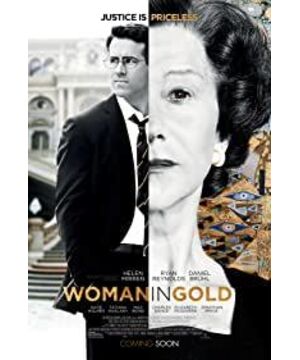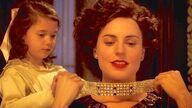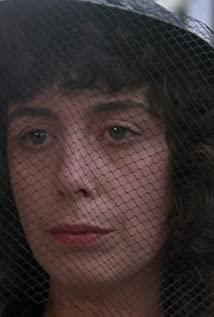Let us return to the once infinitely prosperous Europe before the First World War. In "The World of Yesterday" by Stephen Zweig, this dying empire and his artistic heart are described in detail: Vienna. In 2014, director Wes Anderson's work "Budapest Hotel" in tribute to Zweig has revealed a corner of the history of Jewish national exile, and this time our story is still closely related to this great and fragile nation. Just as Zweig described most Jewish families living in Vienna, the Jewish merchants here have close family relationships, work hard, and continue to extend their careers to all walks of life. But at the level of offspring, they even hope that their children can work in lawyers, music, art and other industries, so as to become a truly tasteful class. In real history, there is such a family of brothers. In 1901, his brother Ferdinand married the banker’s daughter Adele. In 1907, he was funded by the famous European painter Gustav K. Limter, created this painting for 25-year-old Adele-"Portrait of Mrs. Adele Bloch-Bauer I ". This work took Klimt four years to complete. During the period, there were many rumors about him and Adele. Adele became one of his three favorite models. The rest are his wife and another. A red-haired woman. For more information about Klimt and his works, please refer to "Little Gu Talking Painting II"-Golden Painter Gustav Klimt. At that time, Adele was the darling of the upper class. In the memory of future generations, she sometimes wore white loose long clothes and wandered around with a gold pipe, sometimes dressed in black grace and luxury, sitting in the living room of the mansion. Musicians, playwrights, and artists talked. Adele in the painting does not have a happy smile, but a little melancholy. She has never had children and is accompanied by headaches. She is fragile and beautiful. It is said that the curved hands in the painting are because she has a finger disabled, which needs to be concealed from time to time. Critics believe that this golden painting symbolizes the heyday of Vienna art. Just as Zweig himself yearned for the freedom of Paris, France when he was an adult, Vienna’s classical and magnificent temperament needed fresh blood, and Klimt, like the impressionist pioneers in Paris, created his own secessionist in Vienna. . As the son of a gold carver in the Golden Hall of Vienna, Klimt has no sense of contradiction in combining decorative art with traditional paintings. His art is still modern today. Five years later, in 1912, Klimt created another piece of his style transformation for Adele, "Portrait of Mrs. Adele Bloch-Bauer II", without the complexity. Gold ornaments are replaced by exotic oriental patterns and colors. These two portraits, plus three other landscape paintings, became the five precious works of Klimt in the collection of the Ferdinand family. Klimt died of stroke and pneumonia in 1918. Soon after, Adele left a suicide note in 1923. May her husband donate Klimt’s paintings to the Austrian National Gallery after her death, hoping that these works will be useful to the public display. After Adele died in 1925, Ferdinand kept these paintings on display in her bedroom until Germany annexed Austria, when they were snatched from their townhouse near the opera house by Nazi soldiers, and later ignored the paintings. The association with the Jews was renamed "Woman in Gold". Maria Ultraman’s father is Ferdinand’s brother. Because Adele and Ferdinand have never had children, the two of them often live together. Adele was in poor health in his late period and eventually failed to attend Maria’s wedding. Following his wife’s wishes, Ferdinand gave Maria the expensive diamond necklace in her favorite painting as a wedding gift. He was a child. Maria and her aunt Adele were very close. However, as the church bells accompanied the celebration of the German Nazi annexation of Austria, the Jewish people in Vienna were at risk. Maria and her newly married husband, an opera singer, hurriedly fled their hometown and headed to California. Los Angeles. The family members have since separated. She never saw her parents again in her life. Uncle Ferdinand was far away in Switzerland, and her only sister was lucky enough to settle in the United States before her. After 60 years of wind and rain, in Maria’s memory, her father playing the Stradivari cello, a wedding attended by half a Viennese celebrity, a Sunday dinner at her uncle’s house and admiring Klimt’s paintings, she no longer wants to remember these past events. Thinking of it, Austria was even the hometown she never wanted to go back to. Until the funeral of her sister, Maria found her uncle's will from her sister's relics and letters. The uncle, who was the purchaser of the paintings, officially left five artworks to the children of the family. Maria was the only surviving family heir at the time. Although the five artworks at that time had already legally belonged to the Austrian National Gallery. However, in 1998, Austria revised its laws and regulations on property looted during World War II, and successively began to assist the persecuted Jews in recovering their property. This action called Restitution inspired Maria. At the age of 82, she began to run for the family heritage. She found her friend’s son Randol Schoenberg, a fledgling lawyer, and a descendant of Jewish descent who had the same grandparents who died in World War II and fled to the United States. In 1999, the Austrian government officially refused to return five Klimt paintings on the grounds of Adele's suicide note. Maria and her lawyers worked hard to sue the Austrian government, and also fought the US Supreme Court to hear the case. Until 2004, they switched to independent arbitration, and three Austrian experts finally made a ruling that all five paintings should be returned. In 2006, Los Angeles ushered in these five priceless treasures. A few months later, Maria auctioned three of them, totaling nearly 300 million U.S. dollars. In the end, "Portrait of Adele" was sold to Ronald Lauder, a wealthy businessman who was said to have witnessed Adele's appearance as a child. . It was sold for $300 million and is now displayed in his Manhattan gallery Neue Galerie. And Maria Ultraman passed away in 2011 at the age of 94. This film of the same name, which relies on real people and real events, was officially translated as "Woman in Gold", which was just released in North America on April 3rd. It was full of silver-haired elderly people on Friday's premiere. I don't know how many Jewish descendants there are. We are all too familiar with the two main actors of the film. Helen Mirren who plays Maria, she won the 79th Oscar for Best Actress by virtue of her excellent performance in "Queen". This time she played the old Maria, sometimes humorous...sometimes hesitant and sad...sometimes strong and determined... And Ryan Reynolds took another step on his journey into the drama, even though he was still bullied. s face. He emigrated from a typical second-generation, and told the fairy tales of the family that only stayed in childhood, and even asked Maria, why the past can't be just let it go. And Maria’s experience and beliefs have substituted him into the torrent of history and family, where he picked up emotions and responsibilities that he shouldn’t forget. Finally, in a case that no one thought could be won, the Austrian government was brought to court to help Maria win. There is also a descendant of German Nazis in the film, played by Daniel Bruch, who has been trying to help Maria and to make up for the faults of his family. From the perspective of the plot skeleton, the whole movie is actually a legal film, but the screenwriter and director turn the plot to Maria’s memories, expounding more about family and kinship. Re-examine the Nazis from the perspective of art plunder, and cut into the persecution of war from the perspective of family separation. This also resolves the suspicion that most people feel that everyone will fight for this huge inheritance when they first read the story. Only when we truly understand Maria’s experience and past can we have the right to judge. The most impressive thing in the film is these rare smiles. 1. Maria's sorrow after returning to her hometown is resolved 2. Maria was calm in the face of the final arbitration and finally she plucked up the courage to return to her former residence, as if she had returned to the happy family and saw her aunt's voice and smile again. Our combination of "Queen" and "Green Lantern" still brought a lot of surprises to the audience. With the main theme of the film: the inheritance of justice and family feelings, the film ended smoothly. Director Simon Curtis, who is good at remakes of true stories, directed "A Week with Monroe" in 2011 and sent actors Michelle Williams and Kenneth Branagh to the 84th Oscars Nominated for the leading actress and best supporting actor. And the actor of this movie that year was the winner of this year's Oscar for best actor, who played the little freckles of young Hawking: Eddie Redmayne. And this time in "Woman in Gold" the director's wife appeared as a U.S. Supreme Court judge. She is the familiar British national daughter-in-law of "Downton Abbey" ~ Elizabeth McGovern ~ In addition, unlike the single-line narrative of "A Week Between Me and Monroe", "Woman in There are a lot of Maria’s memories in "Gold". The director needs to arrange many entry points to flash back Maria’s memories from childhood to youth, from seeing things and thinking about people, stunned in neutral, changing perspectives, and ending. The two lines merged, Maria finally walked into her own memories and regained the joy of the family. It is worth mentioning that Hans Zimmer also participated in the original soundtrack of the film. The Oscar winner who won the best original music for "Interstellar" has contributed a lot to the film's emotional lines and tears. Finally, let’s talk about the difference we can feel from this tear-jersey movie with the plot and the main theme? First: The picture of the Jewish upper class is as described by Zweig. They operate cautiously, are united, and dabble in a variety of arts and collections. Even if they are shrewd, greedy, and class-comparative, they have their own lives and lives as shown in the movie. Family members must guard. The huge and wealthy family finally withered into a child living in the United States, which is embarrassing. The war has brought us many such tragic stories. Second: In addition to plundering lives during World War II, the Nazis also did not spare the art. All the property and collections of Jewish homes were looted, and the recovery rate so far is one in ten thousand. Third: A nation in exile who was forced to leave their homeland is burdened more than I thought. Okay, I’m here first this time. I believe there will be resources for this film to be downloaded soon. If you also like documentary films such as "Queen" and "Iron Lady", I believe you will also like this movie to take you through. 120 minutes journey ~ 2015 Xiao Xuan Er Ji---------------If you like my article,
Welcome to follow "Xiao Xuan Er's Late Night Chat" on Station B or Youtube
https://space.bilibili.com/1340064530
Update every Friday, currently available to watch
#日本电影师Blu-ray suit series
#Taiwan Film Master Blu-ray Collection Series
#New and old film mixed cut series
There will be more CC Blu-ray set series in the future
Thank you for your support! Every one of your attention is precious to me!
View more about Woman in Gold reviews











